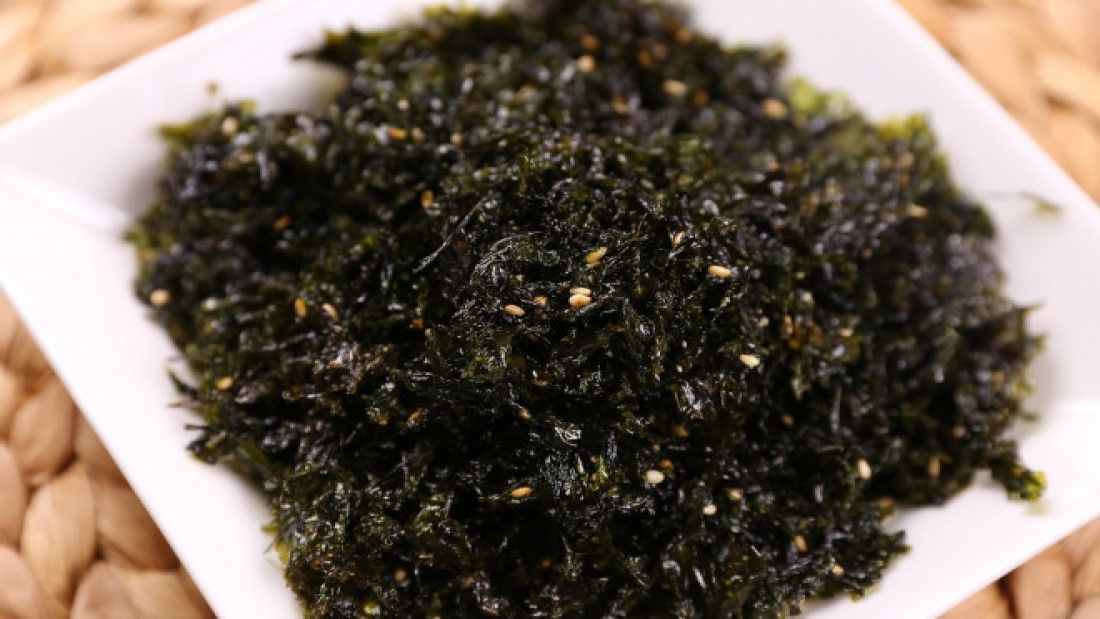Iodine – get informed

In the human body, iodine is essential for the production of the thyroid hormones (triiodothyronine and thyroxine, or T3 and T4 respectively). These regulate how energy is produced and used up in the body. Too much or too little iodine can throw our metabolism off balance. Iodine is also necessary for the development of the nervous system and cognitive abilities in infancy and childhood.
How much do we need?
Government guidelines recommend adults get 140 micrograms of iodine a day. A microgram is a millionth of a gram. So we only need a small amount of iodine – but getting that small amount is vital.
The UK has been considered iodine-sufficient for many years, however, there is now some concern that iodine deficiency may be more prevalent than previously thought. Iodine deficiency in pregnancy may affect brain development in infants. However, there is no current recommendation in the UK to take iodine supplements during pregnancy, and the NHS says that you should be able to get all the iodine you need by eating a varied diet.
Signs of iodine deficiency include an enlarged thyroid gland (goitre), tiredness, weight-gain, increased susceptibility to infections, depression, feeling cold at all times and dry and cracked skin.
On the other hand, too much iodine can disrupt thyroid function leading to weight gain, hypothyroidism or hyperthyroidism. The Department of Health advise that intakes of up to 500 micrograms a day of iodine are unlikely to cause harm.
Are we getting enough?
According to the UK Scientific Advisory Committee on Nutrition (SACN), there is public health concern that many people (regardless of diet) may not be getting enough iodine, especially during adolescence, reproduction, gestation and development. The 2018 National Diet and Nutrition Survey found low levels of iodine in nine per cent of children aged 4-10 years, 12 per cent of children aged 11-18 years, 14 per cent of adults aged 19-64 and eight per cent of adults aged 65 years and over.
The 2016 European Prospective Investigation into Cancer and Nutrition-Oxford (EPIC Oxford) study, (made up of 18,244 meat-eaters, 4,531 fish-eaters, 6,673 vegetarians and 803 vegans) suggested that vegans were falling short of iodine. However, the food frequency questionnaire used in this study did not record the use of sea vegetables or iodised salt, two potentially concentrated sources of iodine.
So where can we get iodine? It is trace element found in seawater, rocks and some types of soil. So the iodine content of food depends on the amount of iodine in the soil or water from which it came. For some foods, such as cow’s milk, farming practices affect the iodine content too.
The major animal food sources of iodine include dairy products and fish. Sea fish and shellfish are often contaminated with polychlorinated biphenyls (PCBs), dioxins and mercury. Raw and undercooked fish and shellfish can also contain harmful viruses and bacteria.
The iodine in cow’s milk is not a natural component of milk, it comes from iodine supplements in cattle feed and iodine-containing disinfectant used to sterilise milking equipment and added to teat dips and udder washes!
There is a wide seasonal variation in the iodine content of cow’s milk, with substantially higher levels found in winter, when cows are confined indoors and fed only iodine-fortified feed. Organic dairy products contain over 40 per cent less iodine than non-organic.
Another way iodine ends up in milk is because of its use in iodine-containing disinfectant used to sterilise milking equipment and added to teat dips and udder washes! Iodine has been used clinically in the treatment of wounds for more than 170 years. Dairy cows’ udders are prone to infection (mastitis) and are routinely washed with iodine which is why some of it ends up in their milk.
Vegan sources
Plant foods containing iodine include wholegrains, green beans, courgettes, kale, spring greens, watercress, strawberries and organic potatoes with skin. However, amounts tend to be low and variable depending on how much iodine is in the soil.
Sea vegetables or seaweed (Kombu, nori, arame and wakame) are an excellent source as they absorb iodine from seawater. They contain many other minerals and trace minerals too, including calcium, copper and magnesium. They can be also be high in protein and fibre, while being low in calories and fat-free.
Remember that since sea vegetables are natural products, the iodine content will also vary between harvests. Sea vegetables expand noticeably when soaked and cooked. For example, wakame expands seven fold by weight when soaked and when cooked, almost 10 fold compared to its dried state. So, soaking, rinsing and cooking results in a considerably lower iodine content per weight in the final prepared product compared to the original iodine content of the dried seaweed.
The edible kelp Kombu, used in East Asian cuisine, can be extremely high in iodine. Avoid using kelp if you have a thyroid problem as it can contain excessively high levels. Some health bodies advise not eating sea vegetables more than once a week during pregnancy as it may contain too much iodine which can disrupt thyroid function. Use sparingly and refer to the nutritional information on the packaging for guidance.
For most people, the regular use of small amounts of powdered or crumbled sea vegetables added to soups, stews, salads, pasta dishes or used as a condiment, is an excellent way to ensure a good iodine intake. A healthy vegan diet containing a wide range of vegetables on a daily basis, with some occasional seaweed and/or iodised salt (used sparingly) should supply sufficient iodine.
The dairy industry is clearly on the back foot as the plant milk market is booming and showing no signs of slowing. Iodine may be low in a plant-based diet, but with a little sprinkle of seaweed here and there and some occasional use of iodised salt, you can continue to avoid cow’s milk and fish and all the harmful substances they contain.
For more information see our Iodine Fact Sheet.




